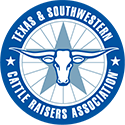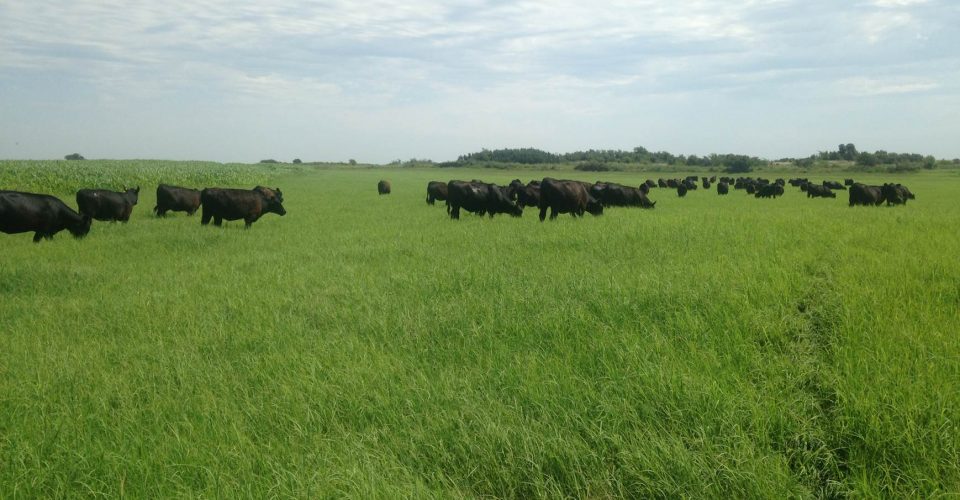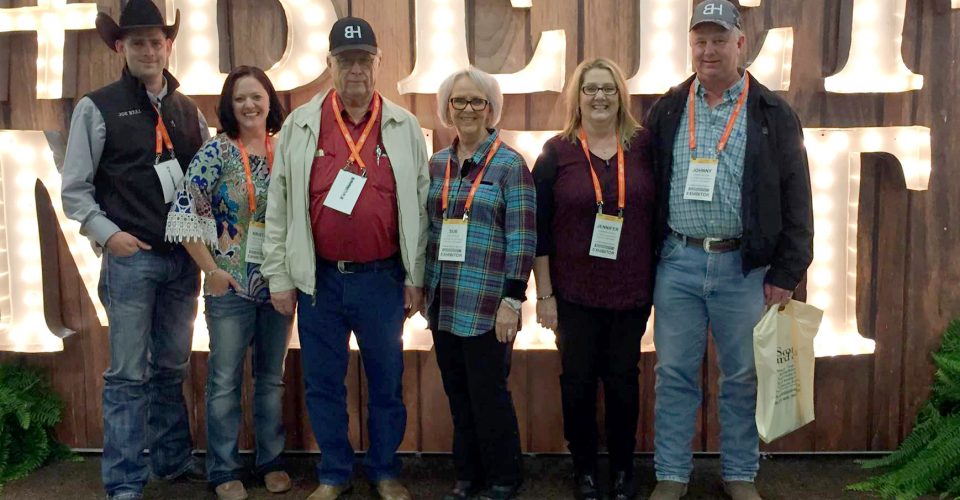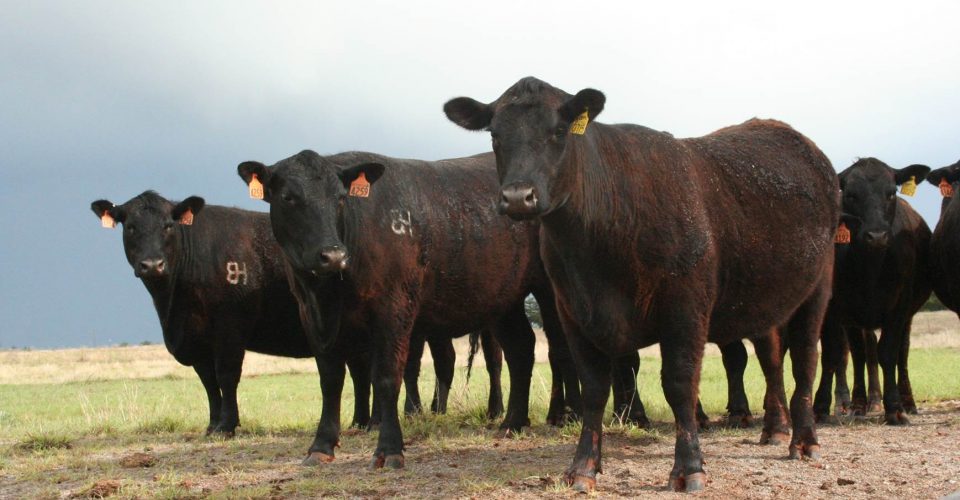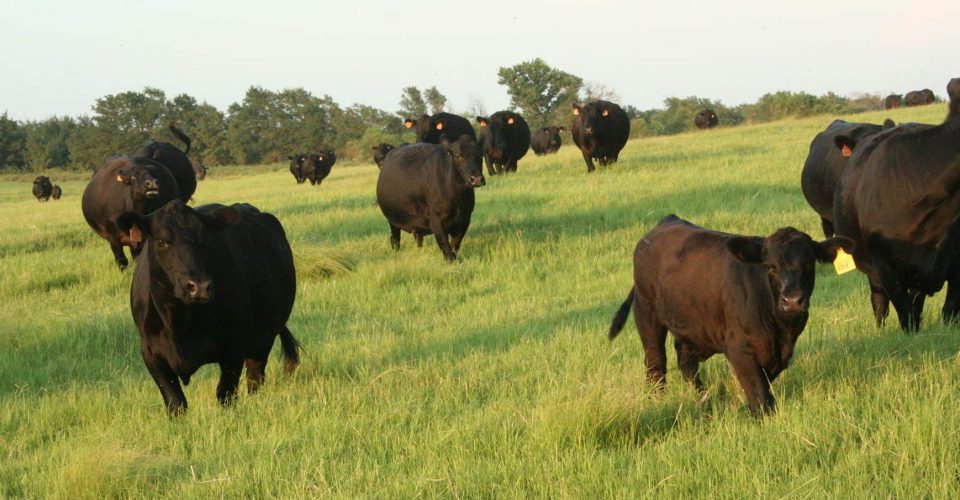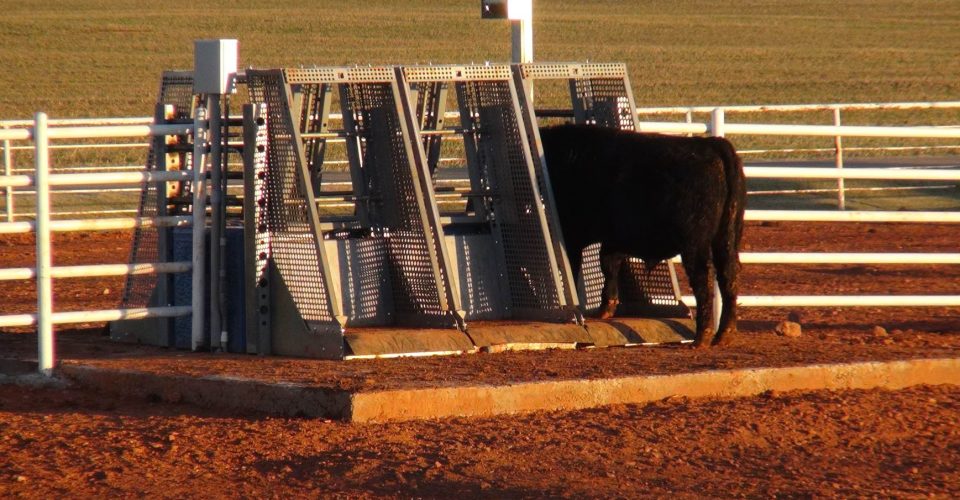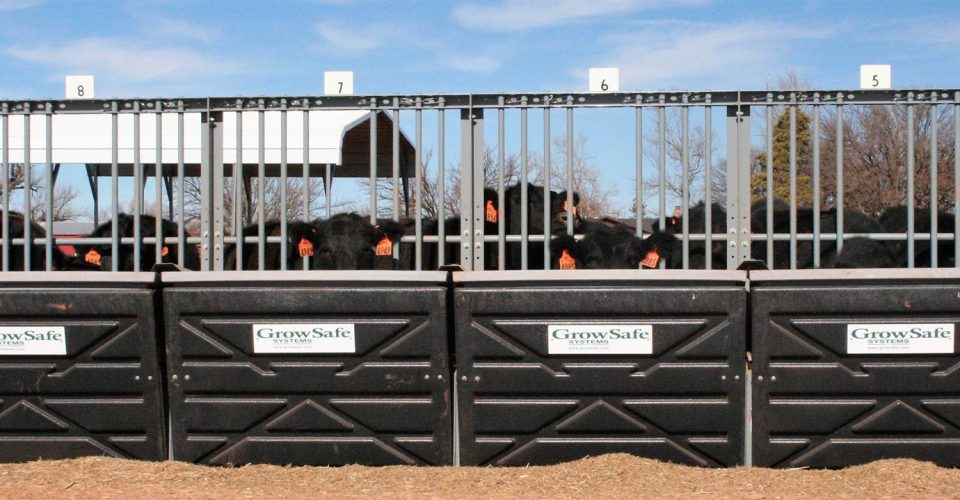Hutson Angus Farms
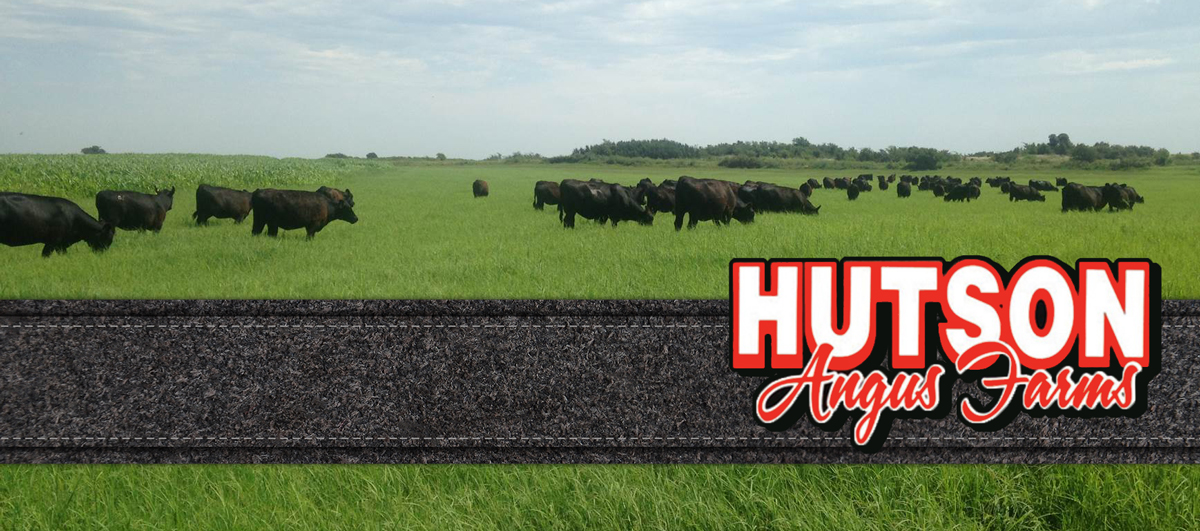
This Oklahoma Angus operation uses modern technology to raise feed efficient cattle.
Story by Maggie Malson; Photos provided by Hutson Angus
Webster’s dictionary defines efficient as “acting or producing effectively with a minimum of waste, expense or unnecessary effort.” When you’re in the cattle business, and the cost of feed continues to rise, producers look for advantages to create a high ratio of output to input.
For cattleman Bert Hutson, Elk City, Okla., raising feed-efficient cattle has made a difference in his herd. And he has the data to back this up.
“We were watching our better-doing cattle and how well they came through the winter,” says the owner of Hutson Angus Farms, “but that was just the visual appraisal of them. We came upon a company, GrowSafe, that accurately measures how much feed cattle are eating.
“When we run them through a 50- to 70-day feeding cycle, we can see which animals gained a pound of beef on 3 pounds of feed versus the ones needing 6 pounds of feed to gain a pound,” Hutson says. “This way you can identify feed-efficient cattle even though they all look good. Feed-efficient cattle gain more weight cheaper and with less feed.”
Ten years ago, Hutson started selecting his herd for feed efficiency, beginning by testing bulls first, then heifers. “It worked out very well, picking out the top individuals out of all these animals,” he says.
Getting started
Using a recommendation from a friend in the industry, Hutson began testing his cattle at a facility in Nebraska. After several years of receiving data, his cattle were surpassing everything else on the tests. He says it’s important to test cattle against other producers’ cattle.
“You have to compare them against contemporary herds,” he explains. “You can’t really just compare to yourself.”
That’s when Hutson decided to invest in a system in Oklahoma. The GrowSafe Systems technology was installed in 2016. It consists of 4 feed nodes in each pen, with bars in place to allow 1 animal to eat at a time per node.
Animals are tagged with electronic identification tags to track individual consumption. The GrowSafe system weighs each node per second and the GrowSafe Beef allows for the continuous calculation of average daily gain (ADG). It transmits to the master computer 24/7. That information is then available to Hutson Angus.
“It’s a closed system,” Hutson says. “At the end of the test, GrowSafe gives us our results. Man can’t mess with it. If man could mess with it, the data wouldn’t be that good.”
Bulls go on GrowSafe at 10 months of age for a 60-day trial period. In addition to measuring the feed intake, each animal is weighed every time it goes to water when using GrowSafe Beef.
“We have a good daily weight on them, so you can figure average daily gain easily,” says Joe Sanders. “We’ll cull some of the bulls after the 60 days, then feed others another 60 days in a feedlot setting. We cull again after the 120 days.”
In 2011, Hutson brought Joe and Krista Sanders on board to run the cattle operation with him. In addition to his Angus herd, Hutson also farms wheat, triticale, and a variety of grasses, with his son, Johnny.
Opportunities to compare
“We test all our bulls and females, as well as test other people’s cattle,” Hutson says. Other cattle breeders can see the importance of feed efficiency and Hutson saw an opportunity to offer that service in his area. Hutson has run 6 sets of tests since installing the system on his operation, which is located along I-40 halfway between Amarillo and Oklahoma City.
“All the animals look really good,” Hutson says. “But you can’t judge a book by its cover. You have to read it.” The feed efficiency tests offer a deeper look between the pages — or in this case — under the hide.
By analyzing feed intake, GrowSafe data enables the producers to identify the cow herd, sires and bloodlines which possess elevated metabolic efficiency.
“A lot of data is acquired through GrowSafe regarding performance, and it plays a role in identifying the cattle that are coming down sick prior to the outward physical indicators of sickness,” Sanders says. “We are able to get them back on track more quickly by utilizing this technology.”
Heifers are also tested through the GrowSafe system; however, Sanders points out that they are on a very high roughage ration.
“Our target ration is for 1-1/2 pounds of gain, but our heifers have been gaining 2 to 2-1/2 pounds,” he says. “It’s lower quality than what they would have 6 months out of the year on pasture. We don’t want them getting too fat going into the breeding season.”
Hutson can also compare his steers and heifers alongside other Angus breeders’ calves in the local feedyard. “This lot has about 7,000 head on feed and we’ve been sending calves there for over a year,” he explains. “We can get all the information back on how they grade, too.”
A strong foundation
The Hutson Angus Farm genetics originate from 2 truckloads of cows Hutson purchased from Burch Angus Ranch in 1997.
“This foundation herd has a lot to do with how well our cattle have been doing now,” Sanders says. “We’ve outcrossed them some, but those females really don’t do as well as the ones we can trace back to that Burch herd. Clarence Burch was quite a cattleman.”
“They were just the true Aberdeen Angus,” Hutson adds. “He didn’t cross them. Back in the day, they were trying to make Angus tall.”
“That’s why I got into the business,” explains Hutson, who raised Limousin cattle prior to purchasing the Burch cows. “I just couldn’t resist the looks of those cows.”
Hutson has stayed true to himself as well, in terms of how he breeds cattle today. Sanders describes the mature cows as weighing 1,300 to 1,400 pounds.
“They’re not big, ‘framey’ cattle,” he adds. “They’re good, thick, big-boned cattle. They go out and do their job.”
These cattlemen expect a cow to go out and do her job without creep feed or special treatment. Cattle graze the crop residue from the farming operation, along with native and improved grass pastures.
Efficiency education
The next step is informing the farmer and rancher.
“One of the biggest challenges we have now is showing the customer what feed efficiency can do for them,” Sanders says. “We’ve seen a world of difference in this herd, just in the 7 years Krista and I have been here. We’ve made leaps and bounds.”
Sanders says most of this was made by using artificial insemination (AI) sires and cleanup bulls, while only testing a few females. “We’ve made such progress with the bulls that I really think we can take a bigger leap by testing all these females,” he adds. “We’re trying to show the farmers and ranchers how far and how quickly they can move by using feed-efficient bulls.”
“They see, and they look, and they hear, but they don’t understand, or they say, ‘This is the way I’ve always done it.’” says Hutson of this ongoing challenge.
Hutson Farms uses advertising, social media, and in-person presentations to help their customers better understand the value of feed efficiency in a commercial operation.
More research on the economics of feed efficiency is available, with those in academia talking about it too. “We hope it helps,” Hutson says.
For the bigger operations who need 8 to 15 bulls, this focus on efficiency is paying off and the cattlemen have seen many return customers. When they were selling out of the test in Nebraska, many customers began asking about the bulls with the BH brand.
“Research has shown they will get about 15 percent return on their money very quickly,” Hutson concludes.
Hutson Angus Farms is a web exclusive article written for The Cattleman magazine in February 2018.
